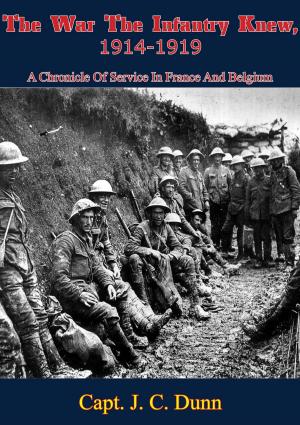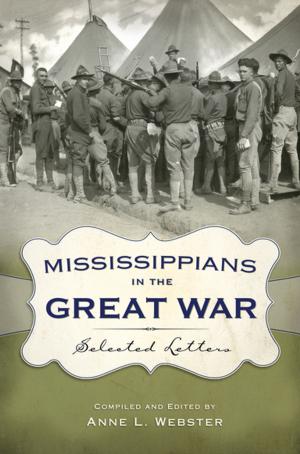| Author: | Sidney Allinson | ISBN: | 1230000194583 |
| Publisher: | Sidney Allinson | Publication: | November 2, 2013 |
| Imprint: | Language: | English |
| Author: | Sidney Allinson |
| ISBN: | 1230000194583 |
| Publisher: | Sidney Allinson |
| Publication: | November 2, 2013 |
| Imprint: | |
| Language: | English |
“The Bantams” tells the nigh incredible story of how the British and Canadian armies recruited over 50,000 under-height men to serve as front-line soldiers in WW1. This book gives one of the best accounts this reviewer has ever encountered of the rigors of trench warfare. It is a must for all collections of World War One history and Canada's part in it. -- Neil Payne, Canadian Materials.
The citizens of LeHavre weren’t prepared for the bizarre sight that greeted them when a British troopship arrived in the harbour in January, 1916, with a fresh contingent of reinforcements for the Western Front. The troops marched down the gangplanks and along the quay as though they were mocking the traditional image of the stalwart soldier. They were about five feet tall, miniature Guardsmen, more like mascots than fighting-men.
And so the first battalion of the “Bantams”, as they were officially called, prepared for battle. They soon proved they were equal in stamina and valor as standard-sized soldiers. By 1918, more than 50,000 Bantams, including 2,000 from Canada, had fought in the trenches, and their casualties were enormous. Yet the story of the Bantams and their outstanding contribution to the war has been forgotten, overlooked, or deliberately concealed by army historians, perhaps embarrassed by the episode and mistakenly afraid that the army’s need to use such little men somehow revealed weaknesses in British preparedness.
But thanks to military historian Sidney Allinson, their story is now told for the first time, and it’s enough to make short men stand tall. Sidney Allinson deserves credit for ferreting out the fascinating tale and for preserving it in the face of official indifference and even hostility. He was able to track down 300 surviving Bantams and make good use of their personal recollections, unpublished journals and letters. His findings document again the widespread illogical prejudice against people who happen to be short. –- William French, The Globe & Mail.
Review of “THE BANTAMS: The Untold Story of World War I.”
“This book chronicles the forgotten plight of the little-known courage of undersized British men determined to join the armed forces and to fight for their country, often against amazing odds, during World War I. At the outset of the First World War, when men were volunteering in droves, many diminutive males, though patriotic and fit, were being rejected because they did not meet the regulation minimum height requirements for enlisted soldiers.
Eventually, though, a few far-sighted men prevailed, and units of “Bantam” infantrymen ranging in height between five feet and five-feet-three-inches was formed. After rigorous training, they were sent to fight in the trenches as bravely and effectively as any other soldiers. The book soon swings vigorously into fascinating details of the forming of the army units that became known as the Bantams, who like so many other soldiers were victims of wartime tactics of attrition which wasted legions of soldiers. Through it all, the Bantams retained their courage and their sense of humour. The author has made it his task to tell their story. And like the bantam soldiers it depicts, this book is a small gem. -- Renee V. Cox, Vancouver, BC, Canada.
“The Bantams” tells the nigh incredible story of how the British and Canadian armies recruited over 50,000 under-height men to serve as front-line soldiers in WW1. This book gives one of the best accounts this reviewer has ever encountered of the rigors of trench warfare. It is a must for all collections of World War One history and Canada's part in it. -- Neil Payne, Canadian Materials.
The citizens of LeHavre weren’t prepared for the bizarre sight that greeted them when a British troopship arrived in the harbour in January, 1916, with a fresh contingent of reinforcements for the Western Front. The troops marched down the gangplanks and along the quay as though they were mocking the traditional image of the stalwart soldier. They were about five feet tall, miniature Guardsmen, more like mascots than fighting-men.
And so the first battalion of the “Bantams”, as they were officially called, prepared for battle. They soon proved they were equal in stamina and valor as standard-sized soldiers. By 1918, more than 50,000 Bantams, including 2,000 from Canada, had fought in the trenches, and their casualties were enormous. Yet the story of the Bantams and their outstanding contribution to the war has been forgotten, overlooked, or deliberately concealed by army historians, perhaps embarrassed by the episode and mistakenly afraid that the army’s need to use such little men somehow revealed weaknesses in British preparedness.
But thanks to military historian Sidney Allinson, their story is now told for the first time, and it’s enough to make short men stand tall. Sidney Allinson deserves credit for ferreting out the fascinating tale and for preserving it in the face of official indifference and even hostility. He was able to track down 300 surviving Bantams and make good use of their personal recollections, unpublished journals and letters. His findings document again the widespread illogical prejudice against people who happen to be short. –- William French, The Globe & Mail.
Review of “THE BANTAMS: The Untold Story of World War I.”
“This book chronicles the forgotten plight of the little-known courage of undersized British men determined to join the armed forces and to fight for their country, often against amazing odds, during World War I. At the outset of the First World War, when men were volunteering in droves, many diminutive males, though patriotic and fit, were being rejected because they did not meet the regulation minimum height requirements for enlisted soldiers.
Eventually, though, a few far-sighted men prevailed, and units of “Bantam” infantrymen ranging in height between five feet and five-feet-three-inches was formed. After rigorous training, they were sent to fight in the trenches as bravely and effectively as any other soldiers. The book soon swings vigorously into fascinating details of the forming of the army units that became known as the Bantams, who like so many other soldiers were victims of wartime tactics of attrition which wasted legions of soldiers. Through it all, the Bantams retained their courage and their sense of humour. The author has made it his task to tell their story. And like the bantam soldiers it depicts, this book is a small gem. -- Renee V. Cox, Vancouver, BC, Canada.












![Cover of the book ANTWERP TO GALLIPOLI - A Year of the War on Many Fronts - and Behind Them [Illustrated Edition] by Sidney Allinson](https://www.kuoky.com/images/2014/august/300x300/9781782895534-vBFM_300x.jpg)


